Planting Trees for Salinity Outcomes
The poster and maps below have been provided by the Murray Darling Basin Commission (external link).
 Treeplanting in a healthy catchment (photo: Arthur Mostead) | Planting trees and other deep-rooted perennial plants is an important activity for managing salinity. Trees can reduce recharge to groundwater, but can also reduce valuable catchment runoff to streams and rivers. The maps in the poster below show how areas can be identified as priority areas for tree planting to reduce salinity in the upper Loddon catchment. High priority areas for tree planting are those contributing to high stream salinity. Low priority areas are those contributing to low stream salinity. The individual maps in the poster below are also provided separately on this page. The poster is based on products coming out of the Victorian REALM Tributary modelling work, including the spatial representation of salt and water runoff rates for the baseline/benchmark period. On top of this data is overlaid a simplified dryland Rapid Assessment Tool – that reduces salt and water from each subcatchment (by 50% in this example), looks at downstream changes in river salinity and then makes comments on priorities for planting trees and other deep-rooted perennial plants. |
 MDBC Salinity Poster | Adobe PDF - 951Kb Photo acknowledgements for poster (left to right): Matt Kendall (degraded catchment), Greening Australia (tree planting), Arthur Mostead (healthy catchment). To view the information PDF requires the use of a PDF reader. This can be installed for free from the Adobe website (external link). | |
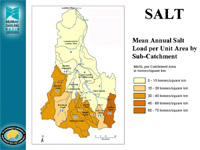 MDBC Loddon Salt Load | 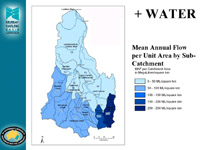 MDBC Loddon Water Flow | 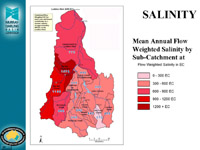 MDBC Loddon Stream Salinity |
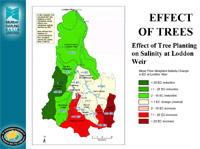 MDBC Loddon Tree Planting Effect | 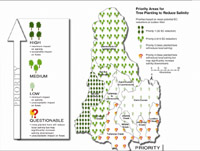 MDBC Loddon Tree Planting Priority Areas |
The Murray Darling Basin Commission is keen to receive any feedback relevant to this poster (02) 6279 0100.


